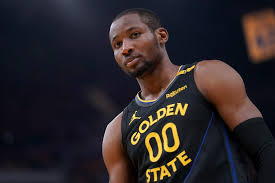Introduction
The NBA offseason is always a fertile ground for speculation and rumors, and the saga involving Golden State Warriors rising star Jonathan Kuminga has recently taken a dramatic turn. In a move that caught the attention of fans and analysts alike, Kuminga has disabled comments on his latest social media posts — a rare gesture in an era of hyper-engagement and fan interaction. This digital silence comes amid swirling rumors about a potential trade, stirring a mix of intrigue, concern, and debate within the basketball community.
Is this a strategic choice to avoid distractions, or does it signal deeper unrest? What do the trade rumors really mean for the Warriors, Kuminga, and the broader NBA landscape? In this comprehensive exploration, we delve into the background of the trade rumors, examine Kuminga’s social media behavior, analyze the possible motivations behind disabling comments, and consider the implications for all parties involved.
Part 1: The Rise of Jonathan Kuminga — A Brief Career Overview
Before diving into the current situation, it’s important to contextualize Jonathan Kuminga’s journey. Drafted seventh overall in the 2021 NBA Draft by the Warriors, Kuminga arrived with the weight of high expectations. His explosive athleticism, versatility, and potential as a two-way player have made him one of the most exciting young talents in the league.
His time with the Warriors has been marked by growth and flashes of brilliance, though also by the typical ups and downs of a developing player in a championship-contending environment. Kuminga’s progression is closely tied to the Warriors’ broader strategy of blending seasoned veterans with youthful energy, positioning Golden State for sustained success.
Part 2: Trade Rumors Heat Up — What’s the Buzz?
Trade rumors involving Kuminga have circulated for months, intensified by the Warriors’ desire to remain competitive while managing their salary cap and roster flexibility. Speculation ranges from potential deals that would send Kuminga to teams looking for dynamic young talent, to more complex multi-team trades involving established stars.
We break down the latest credible reports, evaluate the Warriors’ roster and financial situation, and consider which teams might be interested in acquiring Kuminga and why. The NBA’s trade landscape is complex, but Kuminga’s unique skill set makes him a valuable asset.
Part 3: Social Media Silence — Disabling Comments and What It Means
In today’s connected world, players’ social media activity is closely scrutinized. Kuminga’s decision to disable comments on his posts is unusual, especially given how players often use social platforms to engage with fans and build personal brands.
This section explores possible reasons behind disabling comments: mental health considerations, avoiding fan negativity, steering clear of media distractions, or instructions from the Warriors’ PR team. We also look at historical precedents — other players who have taken similar steps amid trade rumors or personal challenges.
Part 4: Fan and Media Reaction — Divided Opinions
The reaction from Warriors fans and the NBA community has been mixed. Some see Kuminga’s social media silence as a sign of maturity and professionalism, a way to focus on basketball amid uncertainty. Others speculate it’s a signal of frustration or unhappiness.
We analyze social media responses, fan forums, and expert commentary to paint a full picture of the public sentiment. The trade rumors and Kuminga’s online behavior have sparked intense debate about player empowerment, media pressure, and the modern athlete’s relationship with fans.
Part 5: What’s Next for Kuminga and the Warriors?
Looking forward, this section outlines the possible scenarios. Will the Warriors follow through on trade talks, or is this all media noise? How might Kuminga’s career trajectory change in either case? What impact would a trade have on Golden State’s championship window?
We also consider Kuminga’s own statements and interviews, coaching staff insights, and front office dynamics to understand the path ahead.
Part 6: Broader Implications — Player Autonomy in the Age of Social Media
Kuminga’s move to disable comments touches on a larger conversation about player autonomy, mental health, and social media’s role in professional sports. This section expands the discussion to consider how athletes navigate public scrutiny, the pressures of online engagement, and the evolving relationship between players, teams, and fans.
Conclusion
Jonathan Kuminga’s decision to silence the comment section amid trade rumors isn’t just about social media—it’s a reflection of the complex, high-pressure environment NBA players inhabit today. As the Warriors and the league continue to evolve, moments like this remind us that behind the highlights and headlines are real people balancing careers, expectations, and personal wellbeing.

